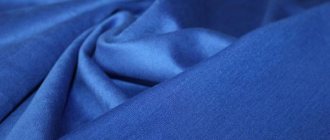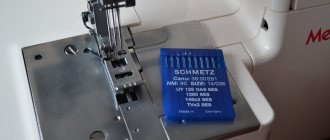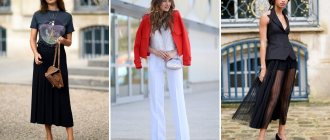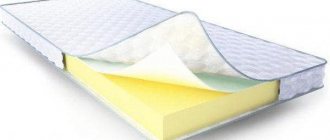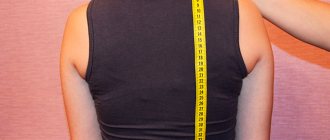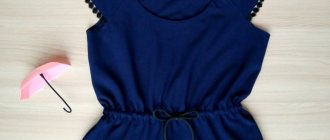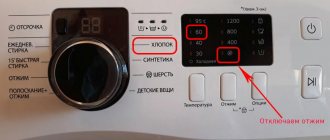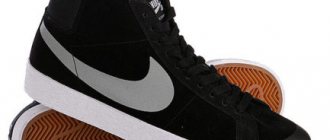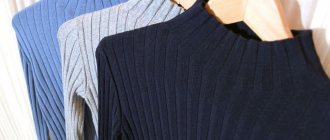Description and types
Women give high marks to the material. Items made from it do not require special care; the composition of French fabric and its texture satisfy fashionistas. They are also pleased that the material does not stretch, although there is stretch. By the way, after this, many people are interested in what kind of fabric this is - Italian knitwear.
French knitwear is made on the basis of artificial textured fibers, which means that the material is synthetic. Thanks to the uniqueness of the threads, it is dense and stretches well, but returns to its original shape. There are several types of French knitwear:
- Demi-season;
- Winter;
- Summer.
The difference is in the type of thread used.
Appearance and properties
The material French knitwear differs from other fabrics in its multi-layer weaving, which provides increased density and wear resistance. At the same time, it is flexible and fits well to the figure.
Benefits include:
- low degree of creasing;
- dimensional stability: French jersey fabric practically does not stretch;
- breathability: knitted structure does not interfere with body ventilation;
- color retention for a long time;
- lack of ability to accumulate static electricity;
- hygiene.
Fact. French knitwear got its name due to the cross-knit weaving method that appeared in this country.
Gallery: French knitwear (25 photos)
Knitwear is a French word, however...
The production of French knitwear uses a knitting method and special machines that differ from weaving machines. French knitwear is used to make underwear, knee socks, hats, and is also used to sew various types of dresses. Quite by accident I purchased an inexpensive cardigan, which, according to the seller, was made from French knitwear.
The history of ordinary knitwear goes back thousands of years, to the territory of ancient Egypt. The material French knitwear is called smart - for its ability to “breathe”, that is, for the free circulation of air through it, excess moisture is easily removed outside and evaporates. The basis of such fabrics is cotton, viscose, polyester, wool, and modern high-tech synthetic fibers. Elastane additives make the fabric highly stretchable. Despite the fact that the fabric does not wrinkle, has increased wear resistance, is elastic and has excellent stretch, its composition does not allow it to be called unpretentious in maintenance.
Iron at a maximum temperature of 110 degrees, before reading the fabric composition on the tag. More synthetics means lower temperature, and vice versa. A simple and at the same time complex model with rich color. It’s interesting that the fabric seems to be the same as the previous dress, but not as porous, more dense, and stretches even less.
The fabric shimmers in the light (I think you can see it in the photo), but in real life it doesn’t shimmer like that. Fits size S-M, but even L will fit. A loose dress, the fabric is like a good cotton T-shirt, so dense, but at the same time light. The fabric is nice. As you can see, all the figure flaws have come out. Seamless underwear is a must. The fabric itself stretches well and is pleasant.
Classification
Matter can be classified into types based on weave:
- Interok . Durable and hygroscopic fabric. The base is 100 percent cotton. Smooth inside and outside. The material does not stretch, but after washing it may change slightly in size. With the inclusion of synthetic threads in the composition, the material will receive a fleece. Based on this material, clothes for home, work, and children are sewn.
- Ribana . A material containing rubber fibers, as well as viscose and polyester. Has high extensibility and elasticity. Products made from it perfectly fit the silhouette. Characterized by high resistance to the formation of arrows and puffs. Ribana is used for sewing home and holiday clothes, casual clothes and clothes for children.
- Kashkorse . This fabric is 95% cotton. It has excellent stretchability, but after prolonged wear it may lose its attractiveness. Various additives in the composition of the fabric make it possible to obtain fabric with or without fleece. Cashkorse is used to make children's and sportswear and bed linen.
Customer Reviews
I’m always short on time, so I switched to a wardrobe made of French knitwear, listening to my friend’s feedback. An excellent way out of the situation: no need to iron, no need to be afraid of wrinkles. I washed it, dried it, put it on – that’s it! Natalya V., 37 years old, Samara
I liked a knitted cardigan on sale; I had my doubts, but took it - the price was tempting. I have never regretted it! Looks beautiful, emphasizes the figure, does not stretch. Alina T., 26 years old, Moscow
- Fashionable knitwear 2021: trendy cardigans, sweaters and knitted dresses
pros
In addition to its high strength, knitwear has other advantages compared to other popular fabrics. The advantages include:
- The special texture of the thread does not allow it to lose color. Dyes are firmly embedded into the surface.
- A wide range allows you to obtain different clothing options based on the material: sophisticated underwear and warm winter clothes.
- A universal material that can be easily matched with accessories and wardrobe items.
- Excellent antistatic properties, which prevents the creation of static electricity.
Not quite French knitwear
Although the word “knitwear” is French and translated means “to knit,” the palm in the creation of knitted fabrics does not belong to France. According to legend, at the end of the 16th century, an assistant to an English priest, William Lee, invented the first knitting machine to facilitate the manual labor of his bride. Subsequently, the machine began to be called a weaving machine, since the thread was bent (curved) to produce loops.
In the middle of the 18th century, also in England, a warp knitting machine appeared, which made it possible to use not one, but several threads, often of different colors. It was only in 1798 that France finally decided to make its contribution to knitting production and introduced the first machine for knitting circular fabrics. Some knitted fabrics are called French knitwear not so much by the place of production, since it is produced in Germany, France, Russia, and even Turkey, but rather because it was French women who were the first to appreciate the elegance of this material.
What's in it
The type of fabric and its characteristics depend on the type of raw material used. French knitwear is never uniform. It combines several types of fibers in different ratios.
The composition is based on cotton, wool, viscose and polyester. To change the properties, additives of lycra, elastane, and polyamide are introduced. By combining threads in different ways you can get:
- natural knitwear – soft and durable;
- fully synthetic - especially high strength;
- mixed or combined - combining the qualities of both types, but with less air conductivity.
The material receives additional advantages due to the inclusion of synthetic fibers between the main threads.
All types are united by a single set of characteristics, but individual properties will depend on the composition. For summer days, knitwear contains more cotton fiber, and for winter - wool threads. Natural material has excellent air and thermal conductivity, but its resource is limited. Synthetic threads, often polyester, give things a long life and the ability to stretch. An intermediate option between synthetics and natural fabric is knitwear with viscose fibers. Elastane in the fabric gives it gloss and stretch.
This is interesting: Lining fabric: types, properties, uses
Advantages and disadvantages
Often, unscrupulous manufacturers, trying to save on production, use low-quality raw materials and dyes. As a result, the cardigan doesn’t even “think” of losing its appearance, I don’t notice any defects, and the material is very pleasant and soft to the touch. An advanced ancient civilization gave the world many scientific discoveries, including a method of special weaving of threads, which resulted in a durable soft fabric.
A distinctive feature of this fabric is its special double (triple, etc.) weaving of threads, and as a result - resistance to any deformation. There are also significant differences visually and to the touch, as various additives are added to impart the desired properties. It perfectly holds the shape of various decorative elements, such as collars, flounces, bows, wings, and any others.
Depending on what is being sewn, for example, demi-season golf, a winter dress, or underwear, synthesized fillers are used, plus high-quality dyes. All three options have greater strength, softness and flexibility. This mainly concerns the temperature conditions of washing and ironing. I specifically went to Wikipedia and looked for an article on this issue. As soon as my eye fell on him, it stuck there. The model is simply awesome - both for the dress code and for the celebration.
French knitwear is also divided into winter, demi-season and summer - depending on the type, threads from different materials are used. I first saw a dress made of French knitwear several years ago in one of the shopping centers. If the fabric is, for example, diving or French knitwear, then it will stretch and you don’t have to worry about our hot spots. If the fabric is jacquard, naturally it will not stretch. Well, etc. Feedback from satisfied consumers suggests that clothing made from French knitwear is not just popular.

